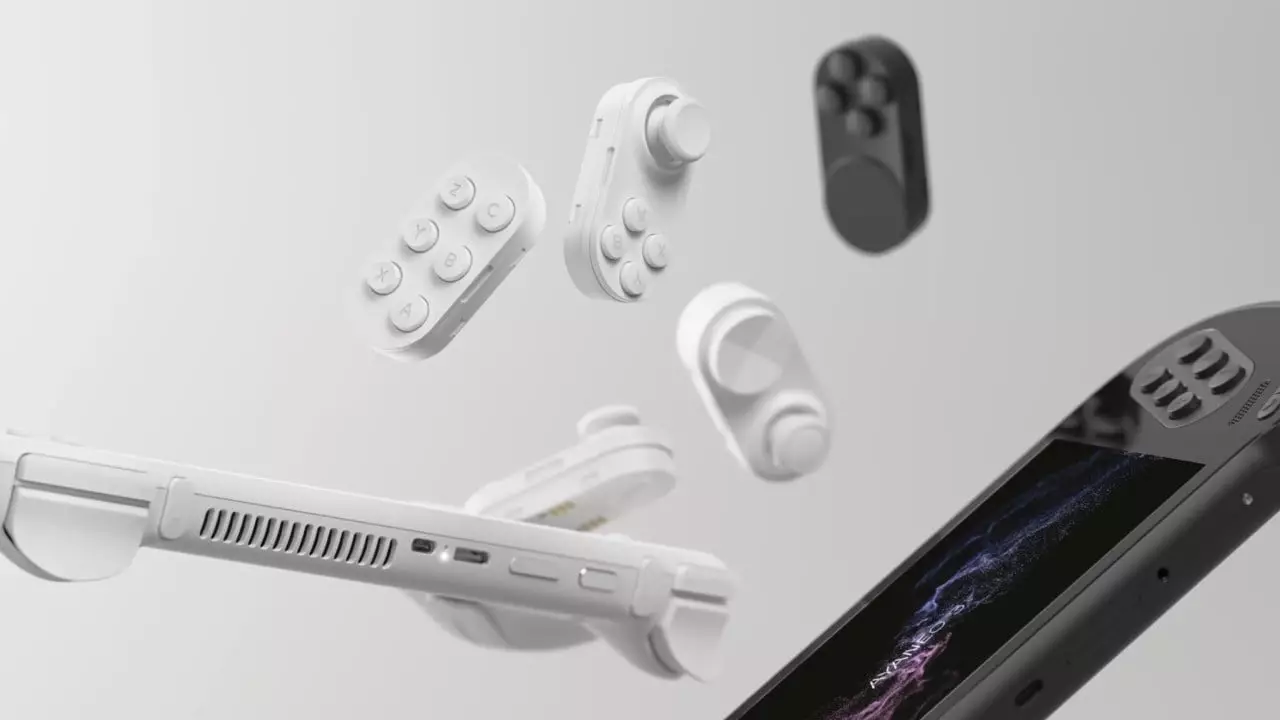As anticipation builds around the release of the highly rumored Switch 2, gaming enthusiasts are left to ponder its potential design and functionality. While recent leaks suggest that the successor will likely retain the core tablet-like structure and detachable controllers that defined its predecessor, there remains a tantalizing prospect for innovation. With the success of the original Nintendo Switch, expectations are undoubtedly high. Gamers are yearning for something that not only enhances their current experience but also introduces fresh features and capabilities that push the boundaries of handheld gaming.
Take, for instance, the recent unveiling of AYANEO’s new handheld, the AYANEO 3. This device showcases a remarkable advancement within the competitive world of portable gaming. Its standout feature, dubbed Magic Modules, allows players to customize their control configurations extensively. This adaptability could be considered a revolutionary step in handheld gaming design, appealing to individual preferences in a way that has seldom been explored by mainstream brands. The ability to switch between different controller layouts, including classic features such as D-pads and customizable buttons, is a compelling draw for serious gamers, particularly those who thrive in competitive environments.
Potential for Customization in Switch 2
Given the success of custom controllers in the market, one cannot help but wonder if Nintendo might take a cue from AYANEO’s offering for the Switch 2. Historically, Nintendo has shown a penchant for creative controller layouts, with companies like Hori making a splash by introducing unique D-pad Joy-Cons for the original Switch. The groundwork for customization exists, but there is a need for deeper exploration of modular designs or interchangeable control layouts. Imagine a scenario where adapters and modules could be easily swapped out based on personal gameplay styles or specific gaming genres—this could change the landscape of how we interact with games.
The Imperative for Evolution
Moreover, as we look toward the evolving needs and desires of gamers, it is crucial for Nintendo to consider how Switch 2 can not only serve its existing user base but also attract new players. The avid interest in various controller configurations emphasizes a broader expectation for adaptability in gaming. Gamers increasingly seek personalized experiences that resonate with their preferences, and this is where Nintendo could truly shine by embracing the model of evolution present in products like the AYANEO 3.
While the physical outlines of the Switch 2 remain uncertain, the possibilities are ripe for exploration. The current market shines a spotlight on customizability and user agency, beckoning Nintendo to harness these trends. By adopting a more flexible and modular approach similar to AYANEO’s, Nintendo could not only redefine its next console but also set a new benchmark within the industry. The excitement surrounding the potential for innovative designs leaves us eager to witness how Nintendo will respond to the challenges and preferences of modern gamers.

